NOVEMBER 19, 2021: Today it was very important to keep on schedule. Shabbat candle lighting was at 4:50, and we still needed to cook the Shabbat meals beforehand. On the schedule, was to visit four different towns before arriving in Belmonte, where we would stay until Sunday.
In Guarda, we woke up early, had breakfast at the hotel, and managed to be on our way by 8:35. We had a forty-minute drive to our first destination, Vilar Formoso, a very small town on the border with Spain. Here recently opened the Frontier of Peace museum.
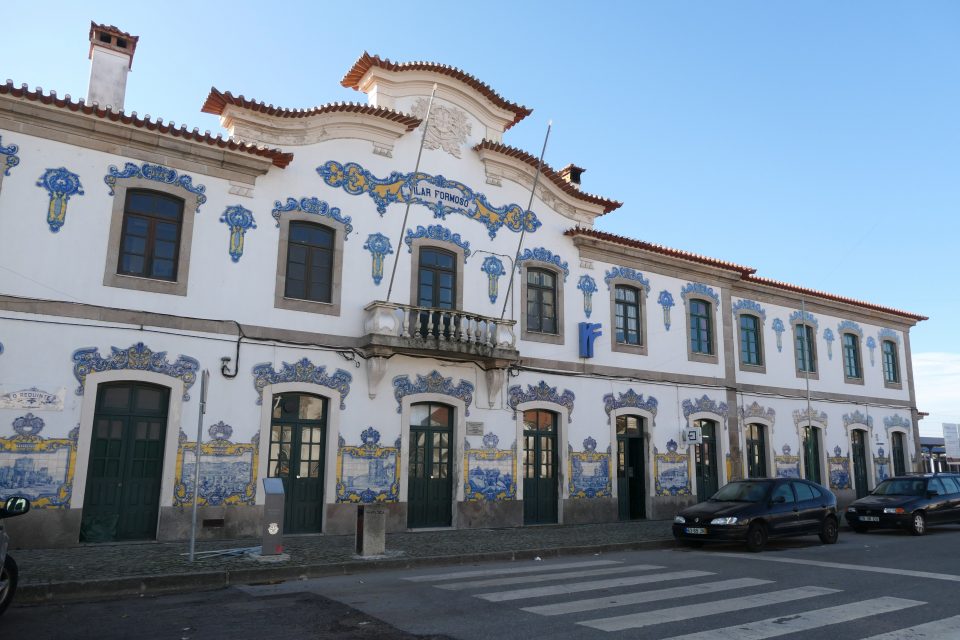
Vilar Formoso train station 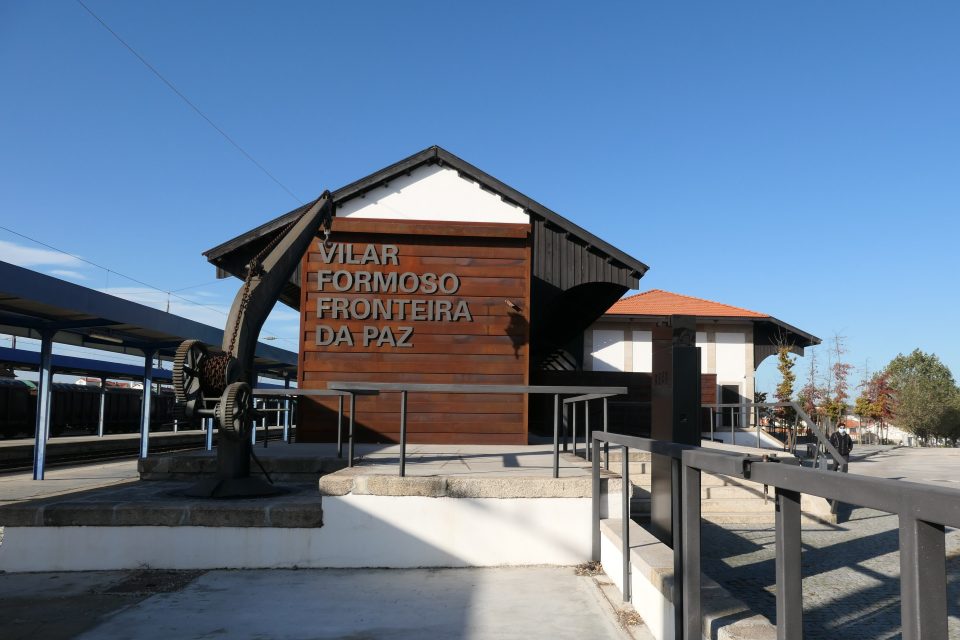
Frontier of Peace museum in Vilar Formoso
The museum only opened at 9:30, and we arrived early. To fill the time, we did grocery shopping for Shabbat at the local Intermarche supermarket. We caused a bit of a disturbance when we finally reached our turn at the check-out counter, the clerk started scanning our groceries, and then we were told that you need to first weigh the produce in the produce department. The people behind us in line were not happy as we went back to have our many fruits and vegetables weighed.
According to schedule, we could spend no more than 45 minutes at the museum. The museum is housed in a former warehouse adjacent to the local railway station. It consists of a series of rooms that tell the story of the Jewish refugees that came to Portugal to escape the horrors of WWII.
We could have spent hours there – not only were the displays beautifully done and always included an English translation, there were also many video testimonials scattered throughout. Most of the displays were personal stories of families, many that received visas from Sousa Mendes. We had now seen several Jewish Heritage museums in Portugal, and this was a league above the rest, both in size and in content. We were very happy that we had gone out of our way to see this amazing world-class museum.
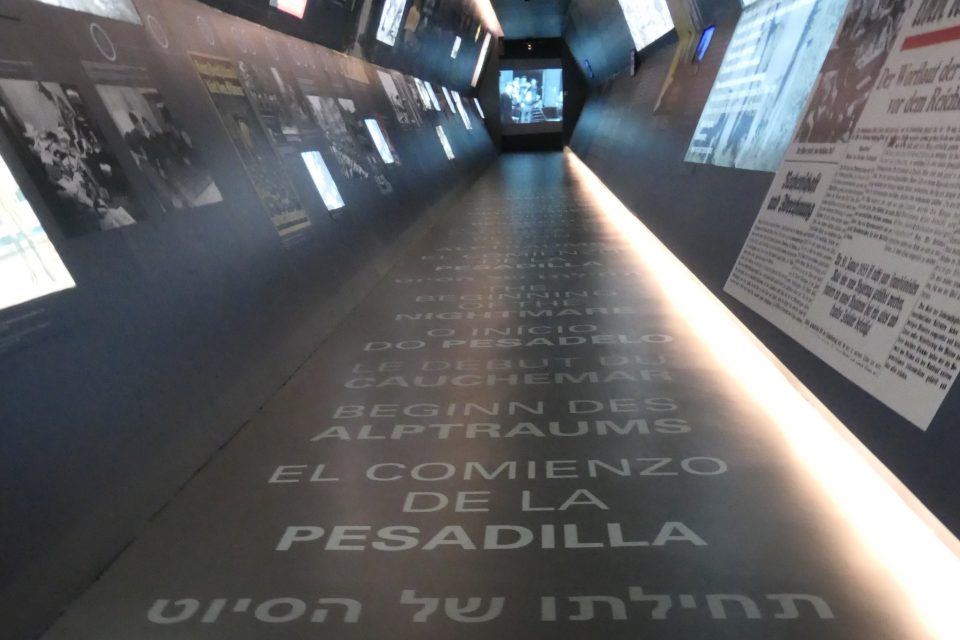
The Beginning of the Nightmare – the first hall in the museum explaining the background of why they desperately needed to enter Portugal 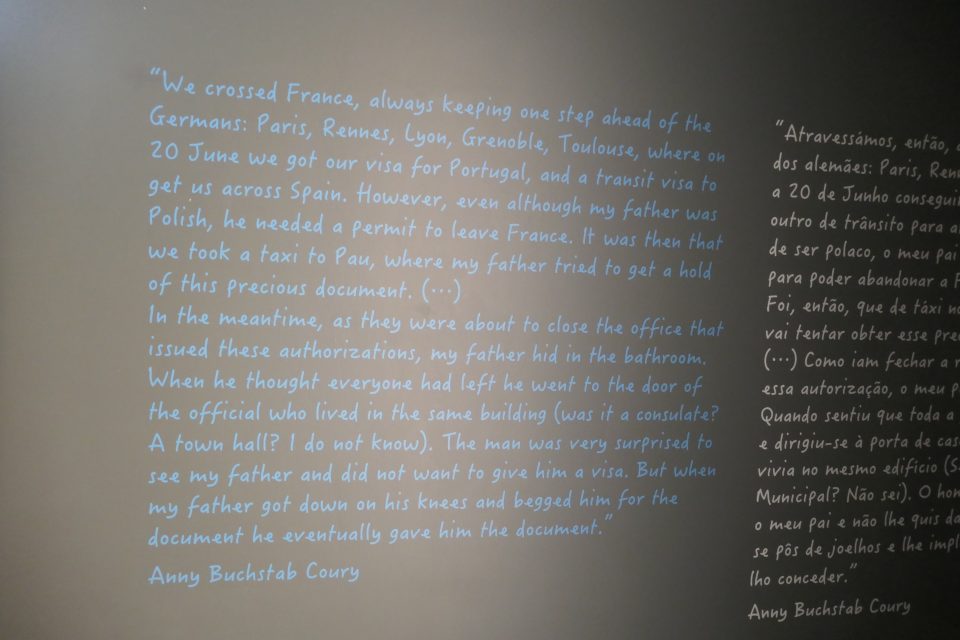
Many personal stories are told of how they succeeded to make the journey 
Many of the stories where from survivors who were recipients of visas from Sousa Mendes 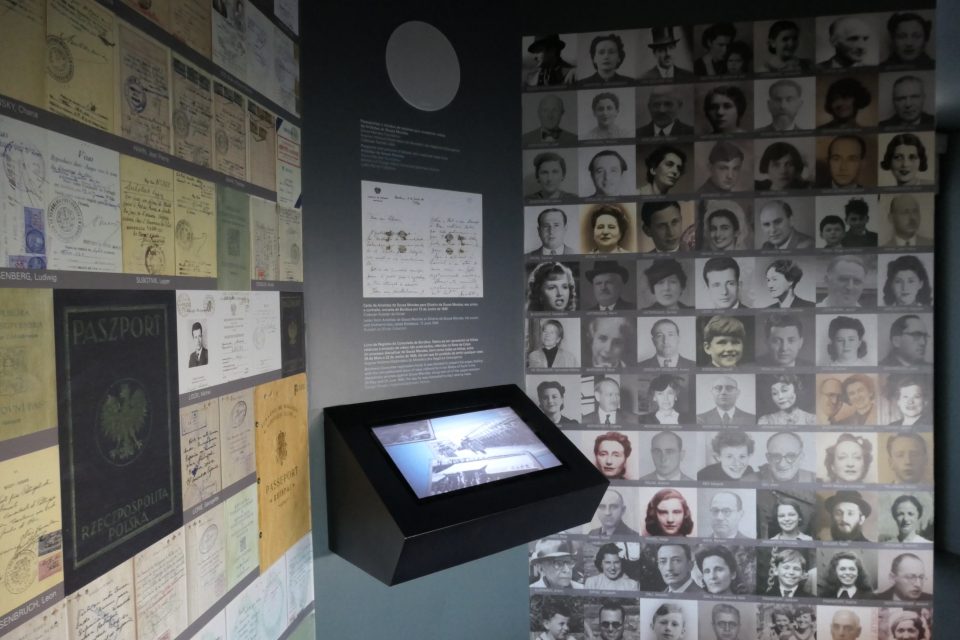
Photos and passports of those helped by Sousa Mendes 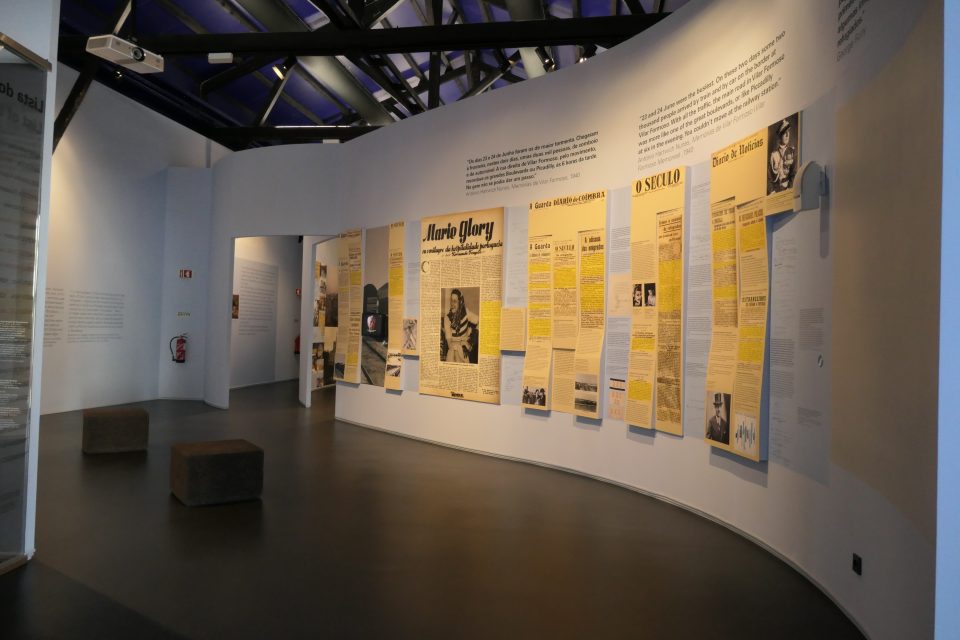
Inside one of the many museum halls 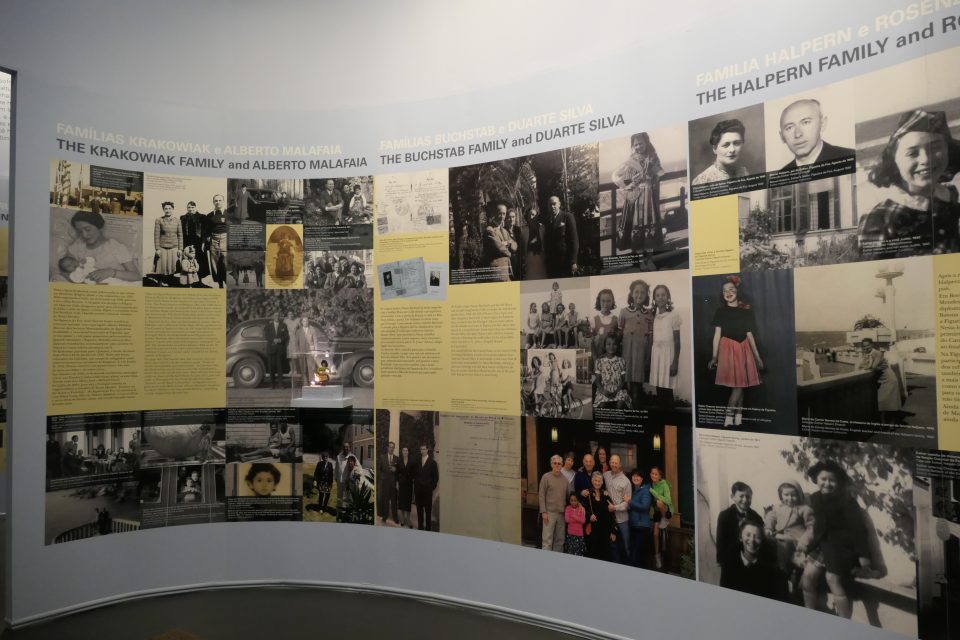
They tell the story of several different families 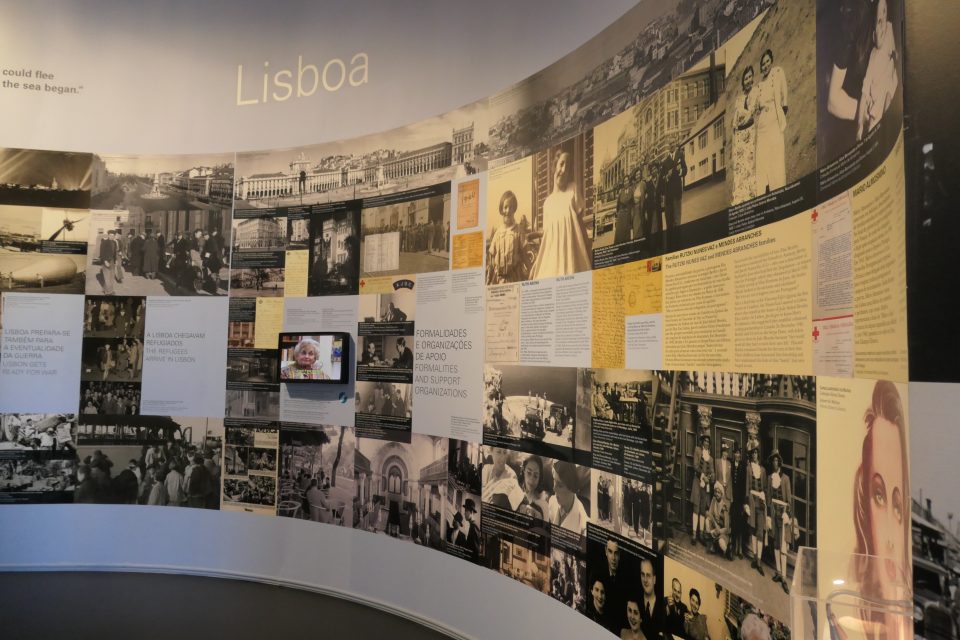
And for each city (more than a dozen of them) they have a display
One of the sponsors of the museum is the Sousa Mendes foundation. In the gift shop of the museum, they have current photos of several families who are the descendants of those who received visas by Sousa Mendes. On each family portrait, is the family name. Mark noticed that on one of the photos, is an uncommon name shared with someone we know from home in Raanana. Mark sent our friend a WhatsApp of the photo, and he replied that this is a family photo of his father’s first cousin. Small Jewish world.
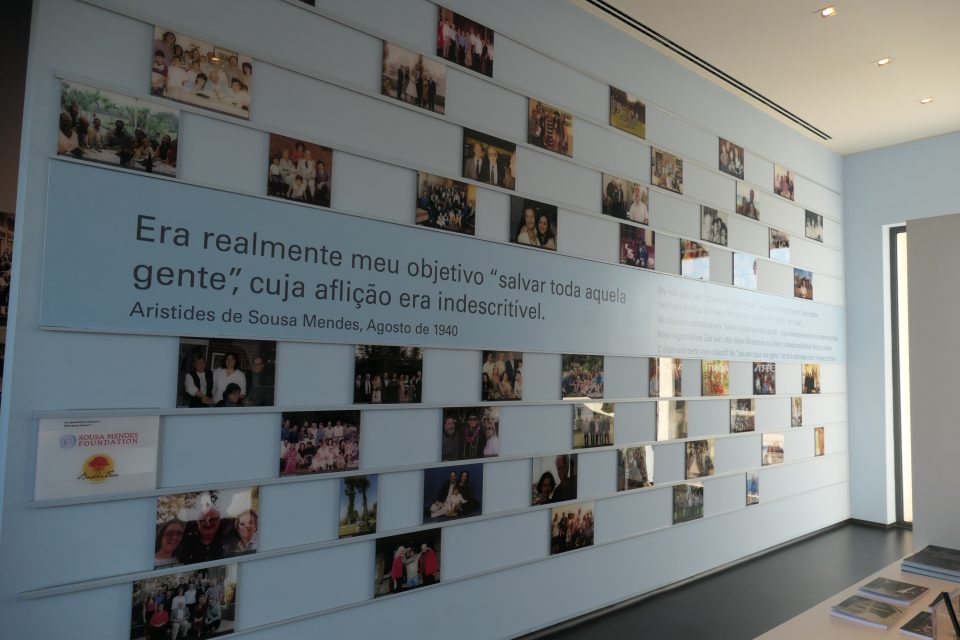
Photos of families of the descendants of those who received visas from Sousa Mendes
It is remarkable that Vilar Formoso, a small village in the mountains, literally in the middle of nowhere, with a population of about 1700, has such an impressive museum. I hope that many people will go out of their way to visit the place and learn the important story it tells.
Our next stop was an even smaller village, Malhada Sorda. The landscape changed as we drove there. We were no longer going up and down mountains. Rather, here the land was much flatter, and for the first time, we saw farms with large pastures for sheep, cows and horses. Most farm buildings and all the fences looked old and where made of stone. Occasionally we would drive through a small village.
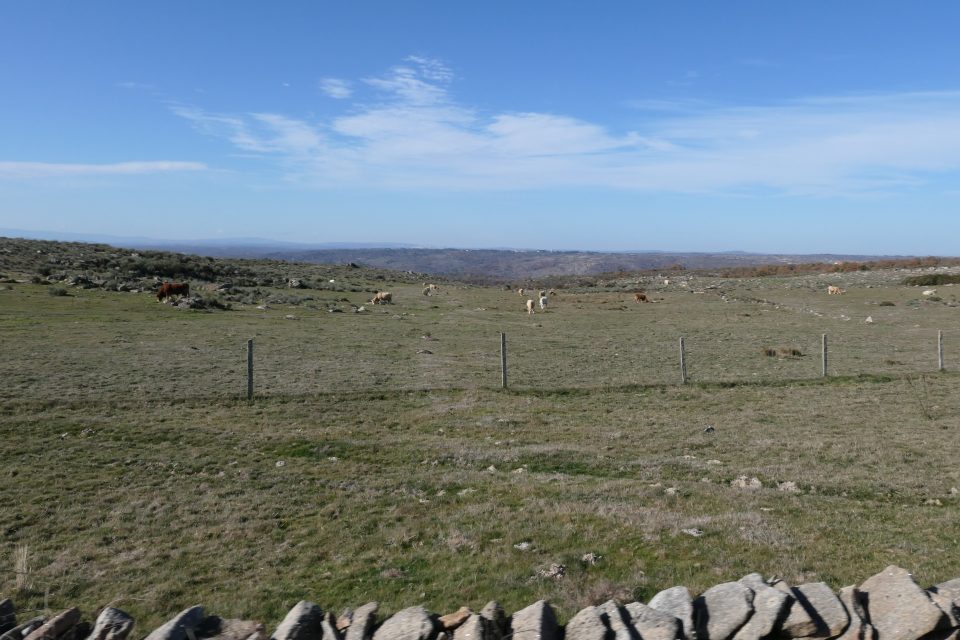
Cow pasture with a view
In Malhada Sorda were the remains of a hidden synagogue. After wandering among the lanes of village, we found the place. On the door was a phone number to call if you want to visit. Mark called and the phone was answered by someone who spoke only Portuguese. She rambled on and we did not understand. We stopped a passerby and asked if he spoke English. He translated and told us she is on her way to open the door.
One of the windows in the museum is a Manueline window. This is a window style, unique to Portugal, from the time of King Manuel in the 1500s. This style is often associated with Jewish homes. Apparently, it was expensive to produce, and only the wealthy, often who were Jewish, could afford to place them in their homes.
The museum has two small rooms. Downstairs is about the weaving trade the Jews worked in. This we understood from the pictures – the signage was only in Portuguese. Upstairs was the previous synagogue with the hidden ark. They showed a movie about the ancient history of the area, and then of the Jews in the region – the English captions seemed to have been translated by an amateur poet. Afterwards, we wandered the lanes of the village looking for where we had parked the car, spotting some signs on the doorposts indicating New Christians. We were now behind schedule – and would need to spend less time at the next destinations.
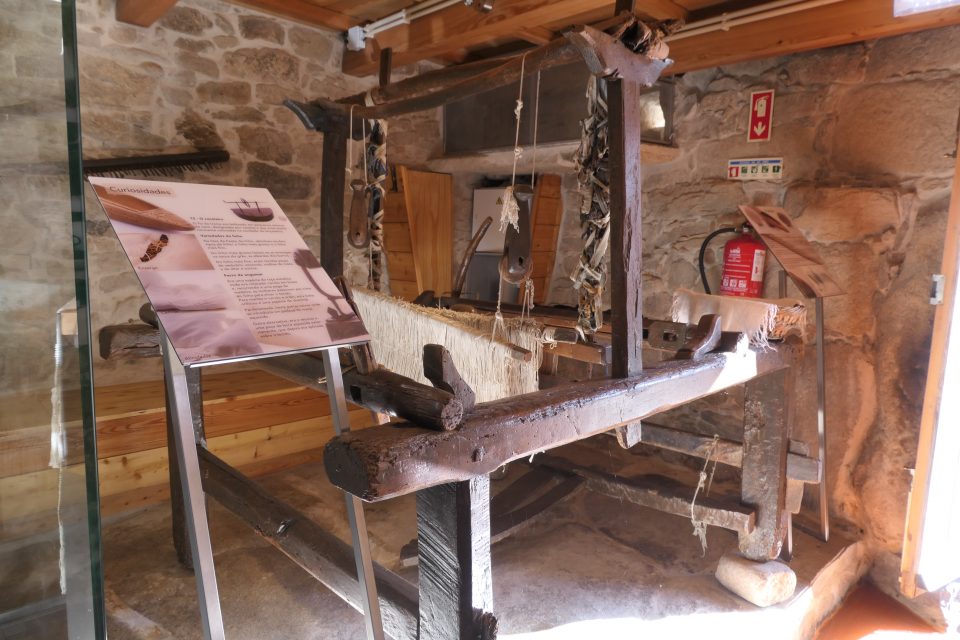
Weaving was one of the Jewish crafts in the area 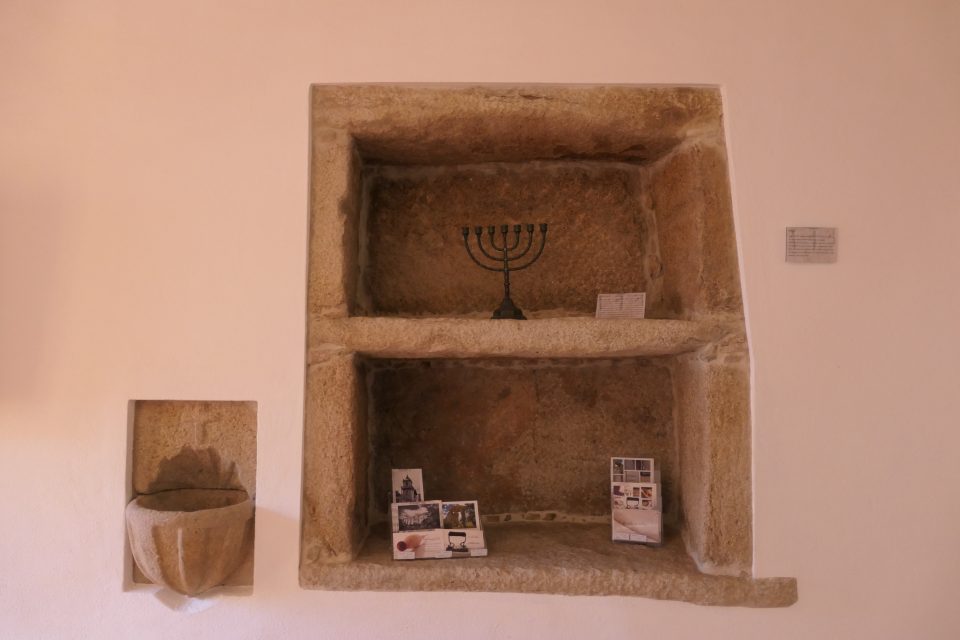
The ark in the hidden synagogue
After a 45 minute drive, we reach Sabugal. We knew there was a Jewish museum near the gates of the castle. We easily found it. The museum has three small rooms, one on each floor. On the entrance floor, there are a couple of displays about the Jews of the area, all in Portuguese. Upstairs along one wall is a timeline. Downstairs is where the hidden synagogue used to be – with an ark very similar to the one we had seen in Malhada Sorda. The museum was vey small, everything was in Portuguese, so we were in and out very quickly. We were back on schedule.

The Sabugal Castle 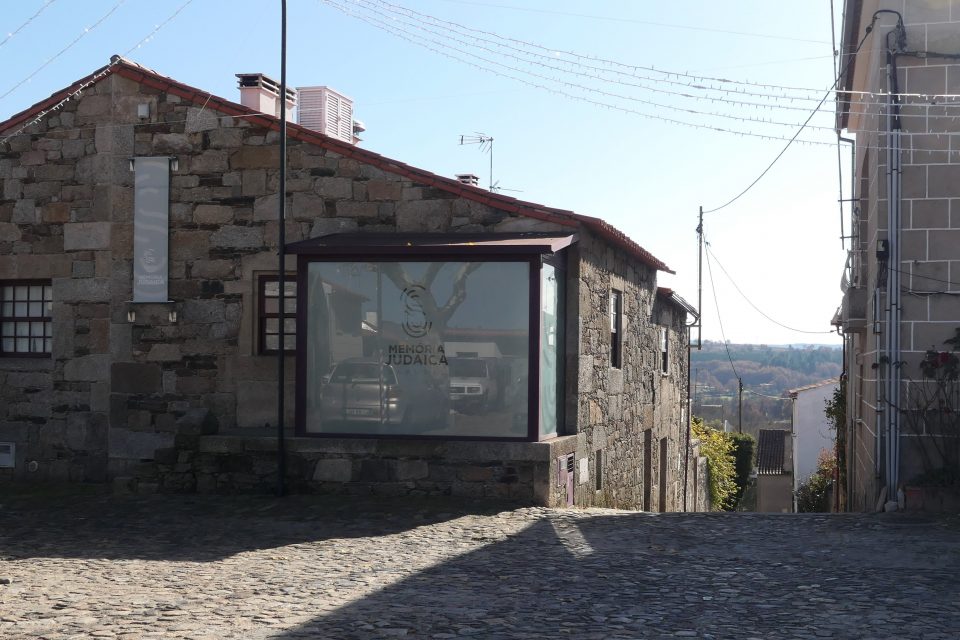
Memoria Judaica in Saubugal 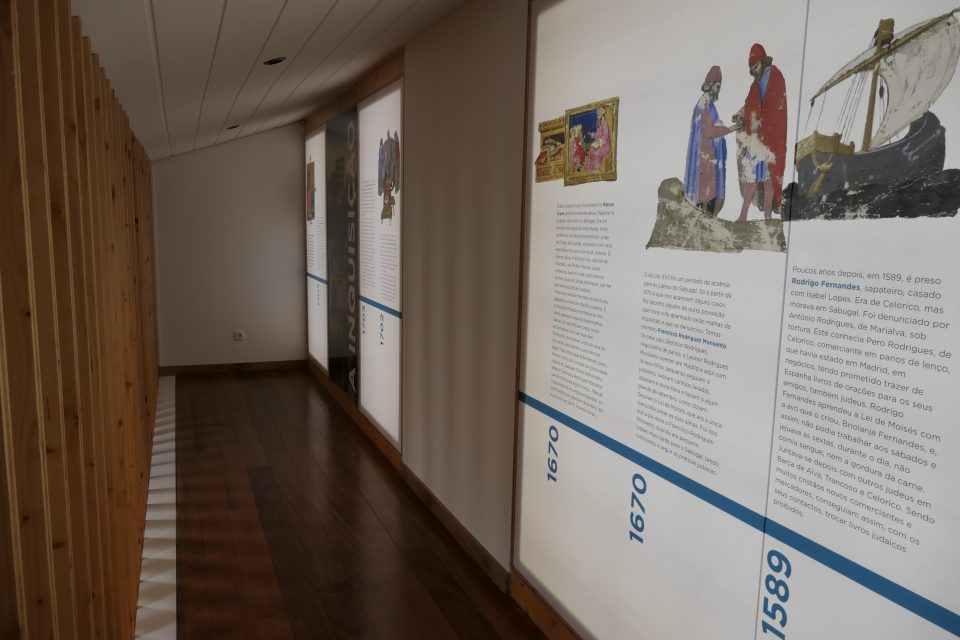
Timeline of Jewish History in Sabugal 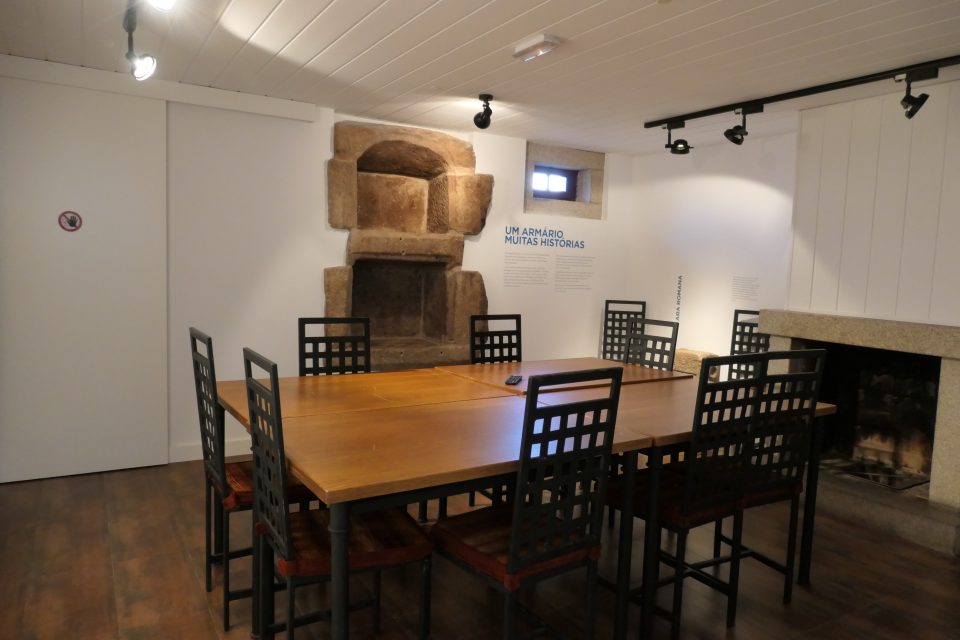
The hidden ark
Our last destination was Sortelha, and it was more of a sightseeing stop. This is one of the best preserved medieval villages in the area. They also have a small area where Jews used to live, and while there we found some crosses on doorposts. The tourist information was closed for siesta so we did not learn more. Sortelha is a small walled city perched high on a hill, where all the houses have the red tiled roofs and are made of stone. Except for two other tourist couples, the streets were deserted, although it is a town people still live in today. This was an exceptionally beautiful place.
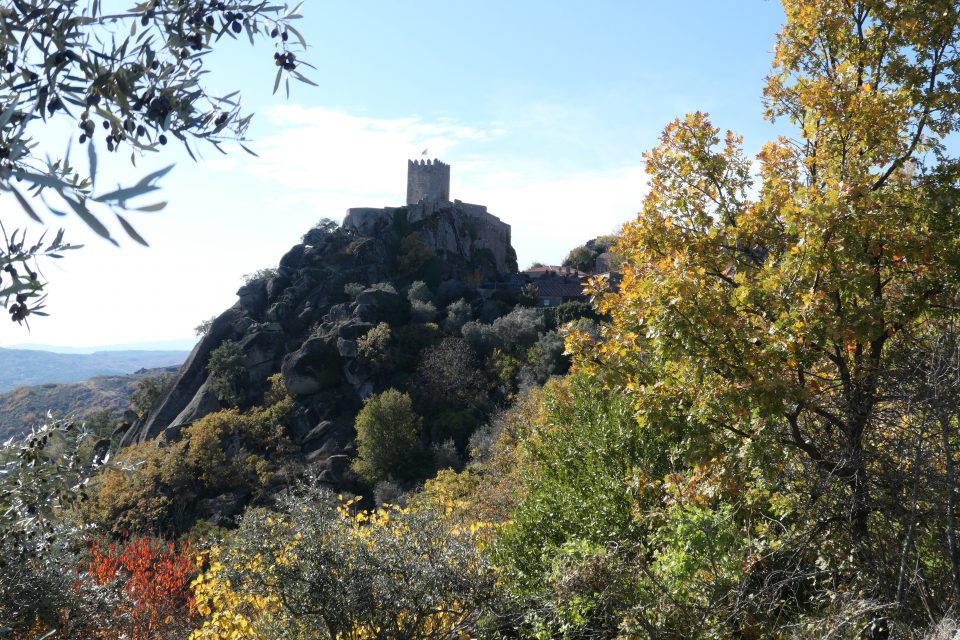
Sortelha castle in the distance 
We parked our car outside the walled village 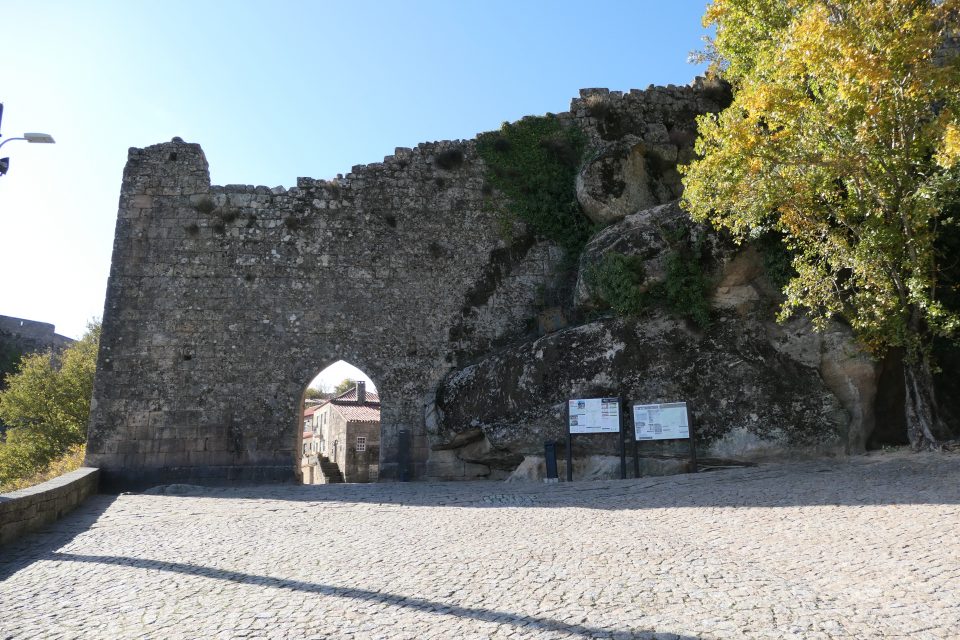
The village gate 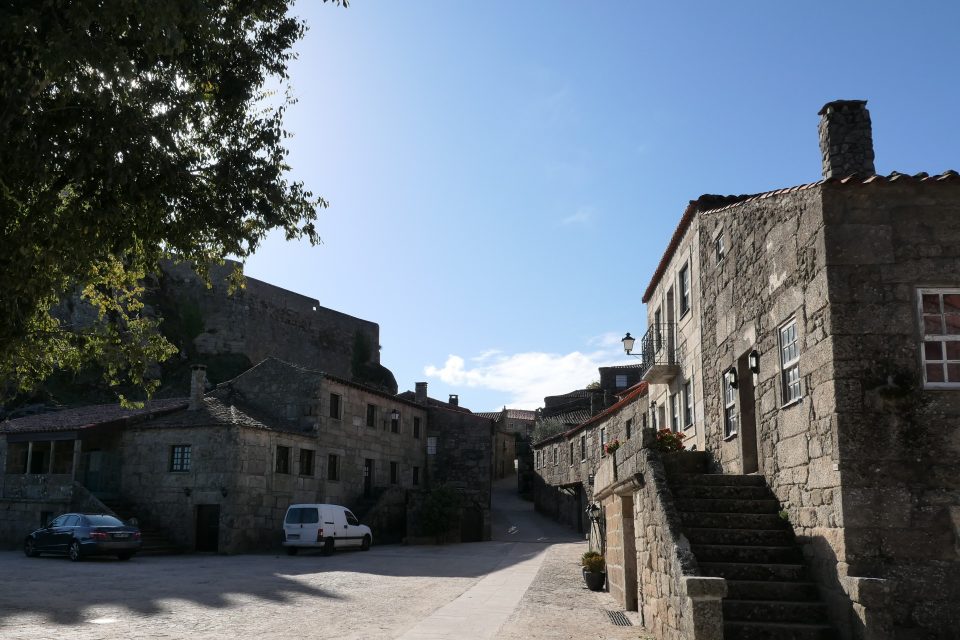
Inside the walls 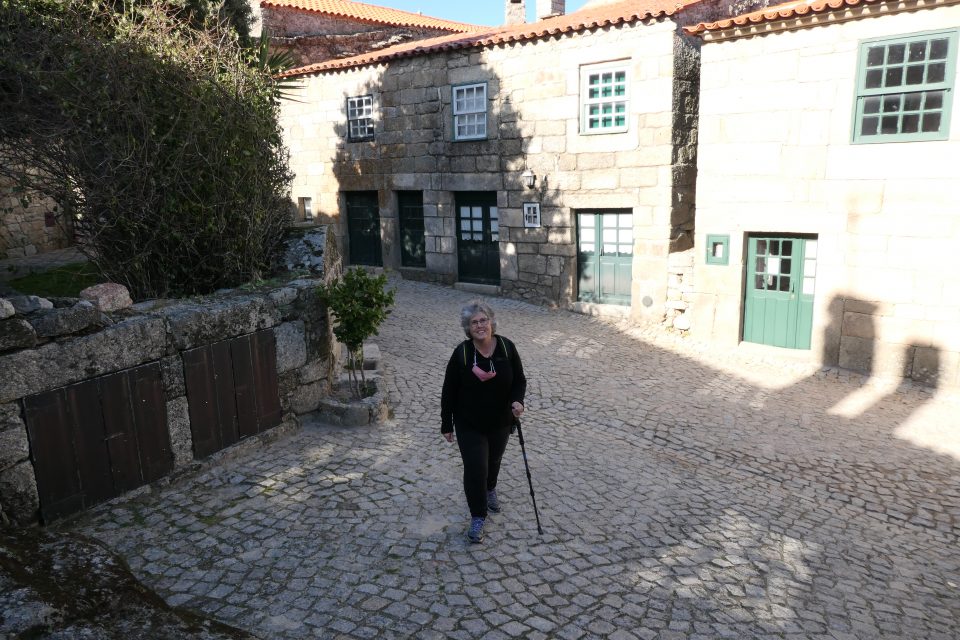
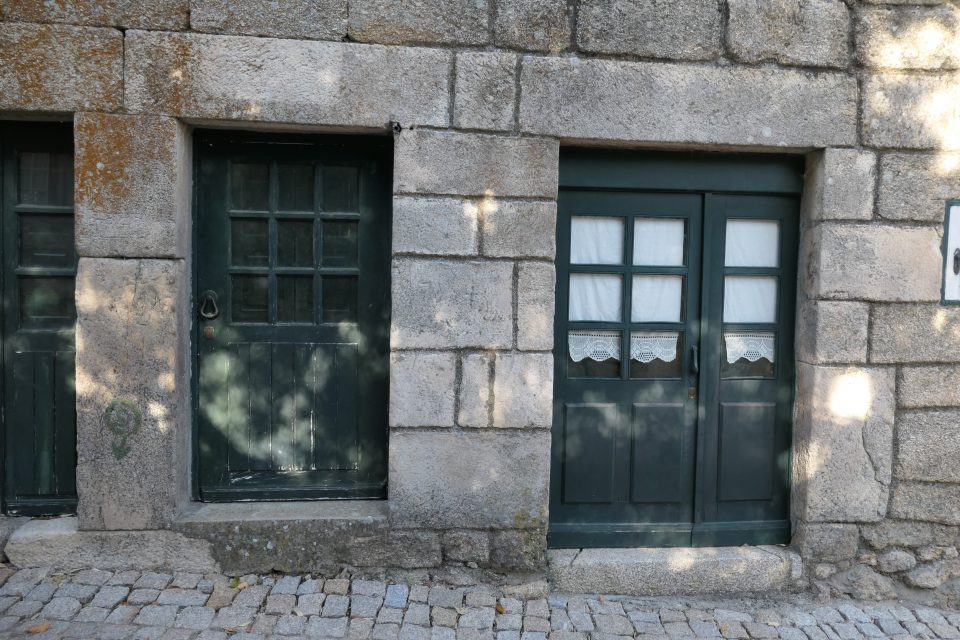
Perhaps a formally Jewish house. One indication is the cross between the doors, usually characterizing New Christian (converted Jewish) homes. Another indication is two doors, one used for their shop and one for their home. 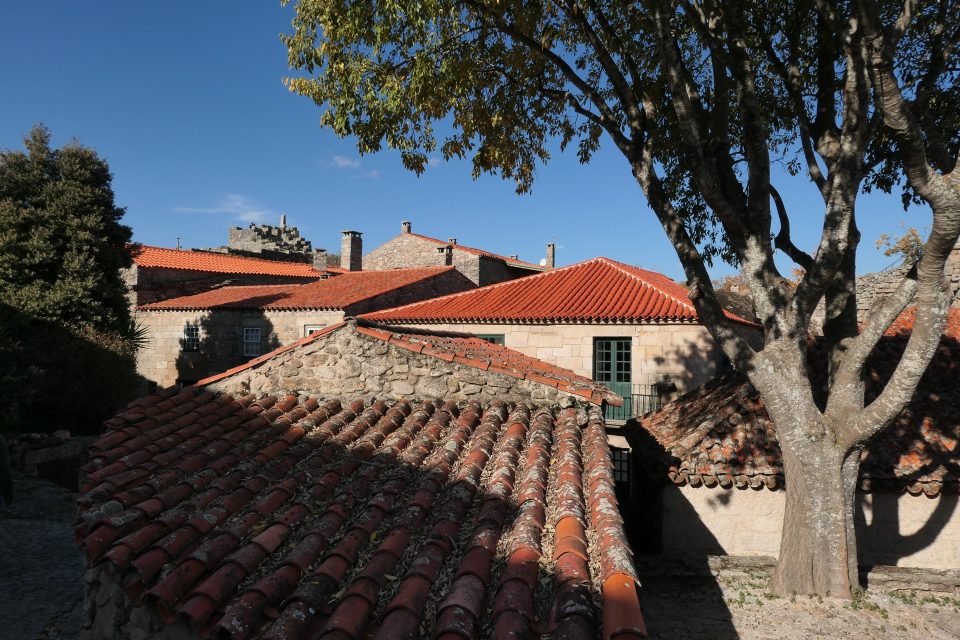
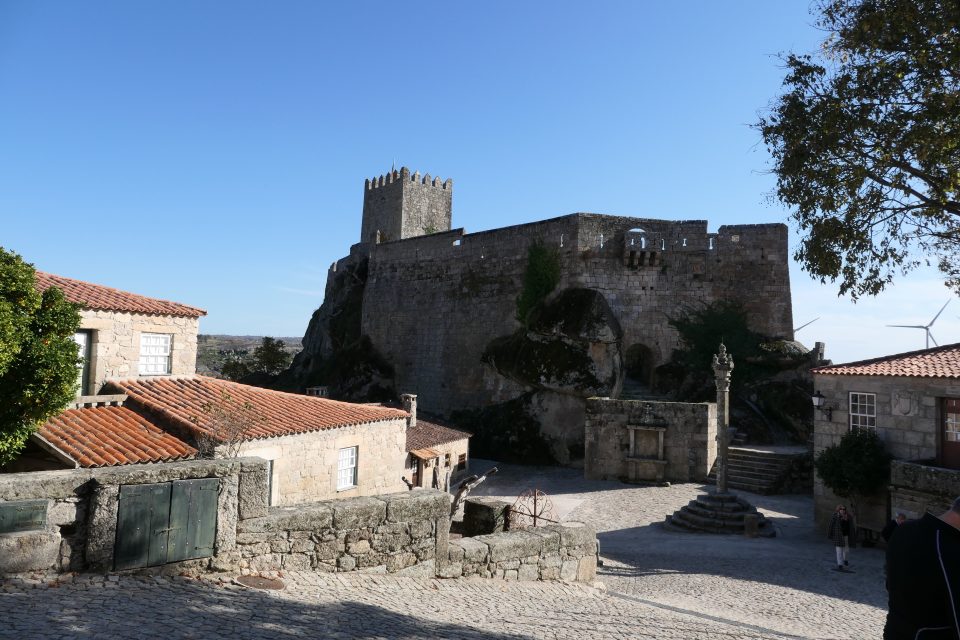
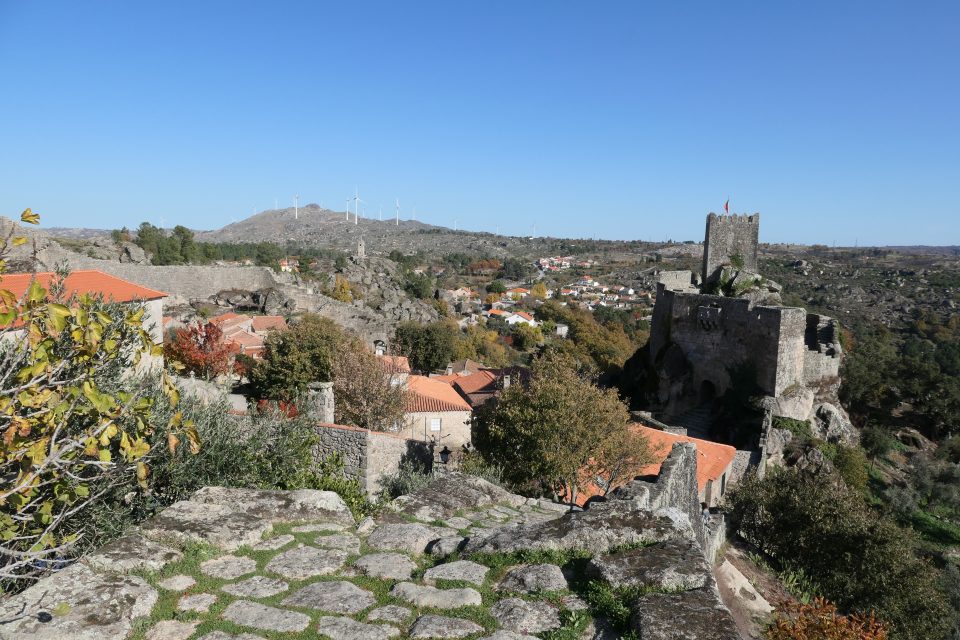
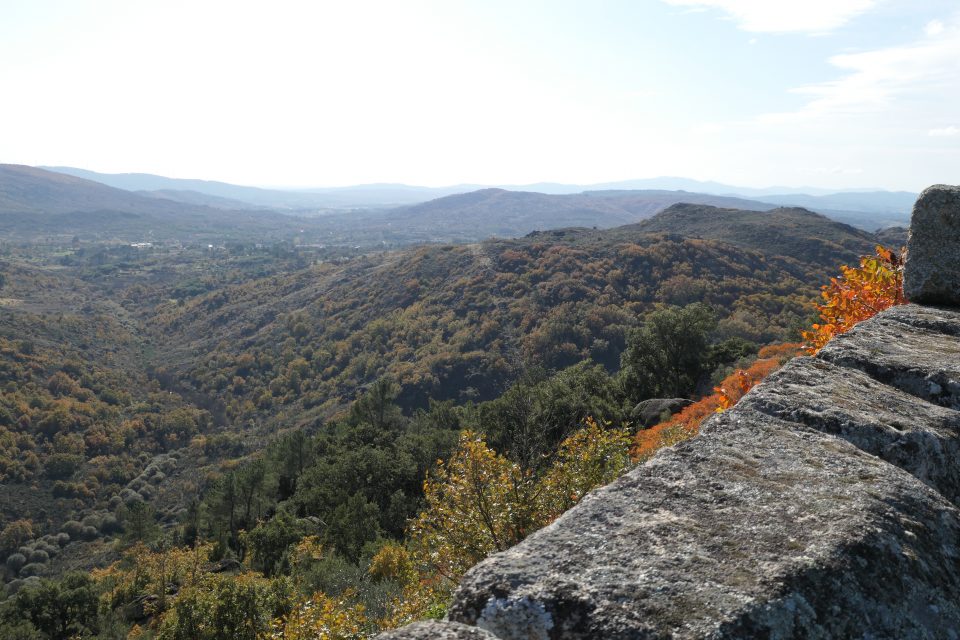
We spent too much time there and once again we were behind schedule – we would reach Belmonte only at 2:30, and would still need to cook for Shabbat. Shabbat services started at 4:30.
Belmonte, is one of the three places in Portugal, that currently have a Jewish community – Lisbon, Porto and Belmonte. While Lisbon and Porto are large cities, Belmonte is a large village. For over 500 years, the Jews of the village practiced their religion privately at great risk, handing it down orally from generation to generation. It was only in 1989 that the Jews in Belmonte returned openly to Judaism and founded the Jewish Community of Belmonte. In 1996, the Beit Eliyahu Synagogue was consecrated.
We had rented a small one bedroom house before we knew that David would be joining us for this part of our trip in Portugal. He selected to stay at a converted monastery located about 2 kilometers away. We drove him there and would see him later for dinner.
Back at our house, Mark got dressed and went to shul. He learned that the reason it starts so early, is that they begin first with mincha afternoon prayer, and then they all light candles together in the synagogue. This is a custom left over from the days when they where hidden.
Mark returned from services at 6:00. David was nowhere to be found. By 7:00 I was getting very worried – the walk from the monastery was through a forest road, and in my head I already saw him falling off a cliff in the dark. We looked up emergency phone numbers to be prepared if he does not show up soon. Mark went to look along the main street for him. They both returned a few minutes later – David has misunderstood and thought services started at 7:00, because that is what the host originally had told us.
We had a large dinner – salmon, spaghetti with tomato vegetable sauce and baked potatoes with curried vegetables. I enjoyed the port wine we had received from the woman on the guided hike on Mark’s birthday.
I must admit, I was not an easy companion today – always pushing to stay on schedule and hysterical over losing David. Schedule now says it’s time to go to sleep – good night.
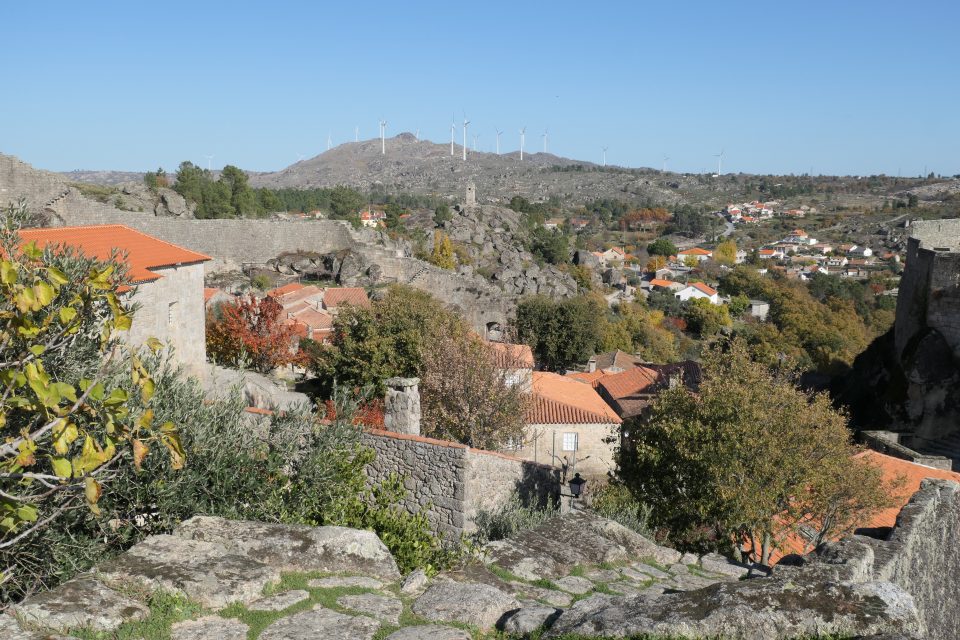
Made me laugh 🙂